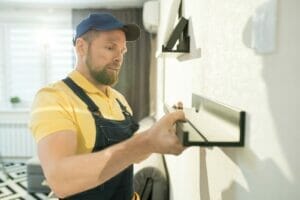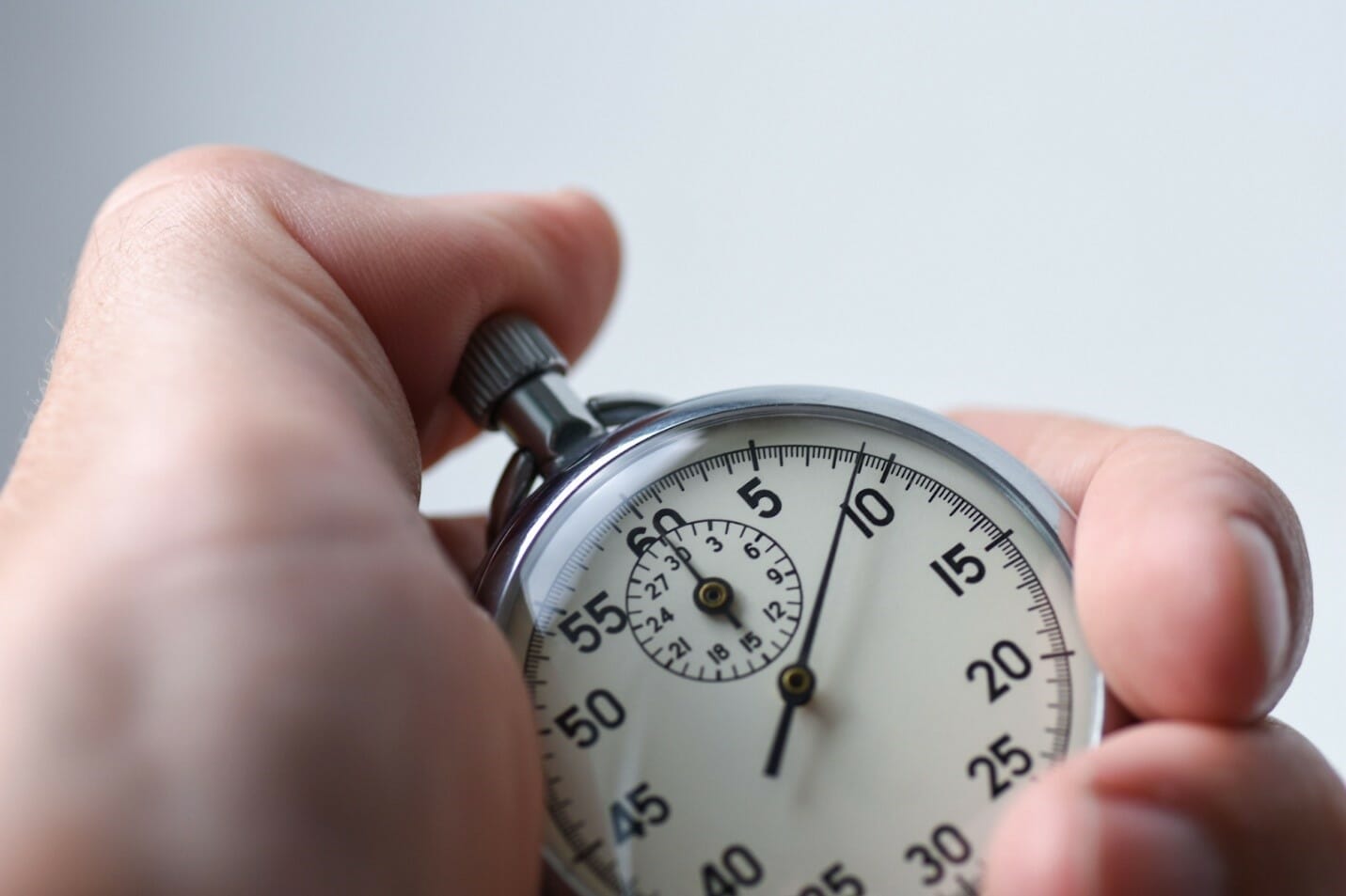Even with the best intentions, our homes sometimes become more than we can manage on our own. There’s no shame in realizing a task is more than you can manage on your own.

As you make a plan to tackle your decluttering and cleaning needs, think through who can support you:

Is there anyone who lives in the home who can help you, such as a partner, children, or
roommate? Consider reaching out to your parents, siblings, adult children, or extended family
members for support. Friends can make the decluttering process more fun, because you can chat as you work.

Sometimes, you need support from someone with a little more training.
You might not have personal relationships where you’re comfortable asking for help, or you may simply need to delegate the task to someone else due to demands on your time.
Regardless of the reason, there are many different types of support.

They usually do not assist with decluttering, but they will clean the space. Sometimes hiring someone can be a motivation for you to declutter in order to give them space to clean!

A handyman can help you install shelves to aid with organization and make minor home repairs, which can make it easier to keep things clean. A handyman (or team) can also help with high-level repairs if you have larger issues or structural damage in your home.

Professional organizers can give you a specific method to declutter with their guidance. They can help you troubleshoot issues and give you accountability—or do it for you. Be sure to choose an organizer who will set you up for success in maintaining your space long-term.

For the most serious cases, you can hire hoarding cleanup specialists to help you get your home under control. Companies like Bio-One are trained to provide discreet, sensitive, and comprehensive service. They are experienced with biohazards and other situations where high-level training is a must.

Hoarding often stems from mental health struggles, and involving a professional can help you treat the root cause of the clutter. Support persons may include:
Regardless of whether you’re taking a do-it-yourself approach to decluttering your home or assembling a dream team of support staff, be sure to celebrate your wins.
Cleaning up your home is an overwhelming task many people avoid. Every time you meet with success, you will be that much more motivated to keep going!
By taking it one day and one small space at a time, you can conquer the clutter.

We are invested in community well-being, and we perform our cleaning services with compassion and discretion. We understand the importance of developing trust with our clients as we are invited into their homes. At Bio-One, we live in the communities we serve and do what we do because we truly care.
Before we begin the cleaning process, we will talk with you to learn your goals. We’ll evaluate details about your particular situation, including:
We will also obtain a work order document to give our technicians permission to work
on your property and a property retention document so we know which items you would like to save.
Every technician working on your property will be familiar with this document so we know what to keep an eye out for.

We can’t guarantee we will find everything, but we make sure everyone is looking!
During the cleaning process, we will:

If you’re ready to start working with Bio-One, give us a call anytime at (385) 310-5102. Our lines are open 24 hours a day, 7 days a week, 365 days a year. Alternatively, fill out a service request on our website.
The word? Kids. Organization is all well and good, but what if you have kids in the mix?

Kids usually make life messier, and they can also make it difficult to stay on task when cleaning or organizing. When you’re being interrupted to attend to someone else’s needs, you have to re-motivate yourself to go back to cleaning every time. It can be a struggle!
However, even though it can be hard to keep up with cleaning when kids are living in the house, you can still successfully have a clean, organized home… at least some of the time!
Spoiler alert: Why not involve them?
Your kids can and should help! You’ll be teaching them good habits for the future.
Here are 5 tips for getting kids involved with your decluttering projects:

Depending on what needs to be done, you can either enlist your kids’ help or find ways to distract them.
If they’re elementary-aged, give them something simple and bite-sized to do, like sorting items into a bin or small cleaning tasks with nontoxic chemicals. Younger kids can make it more of a game—you can give them a cloth and water to “pretend clean,” ask them to sort colors of items on the floor, or something similar.
If they’re teens, they can be counted on to take on some real tasks.

Your kids probably won’t clean things to your standards. However, that doesn’t mean they
aren’t helping, or that you have to redo their work—at least not every time!
When you do this, your kids are taking on responsibilities, learning new tasks, and trying to help you. Their version of done will be better than nothing being done at all.
When you delegate tasks to avoid getting overwhelmed, you’re lightening your load and getting something done that might have been otherwise ignored.
You don’t want to micromanage your kids, but you can gently give them good advice to help them clean effectively. Creating checklists or sticker charts can also help—these tools are motivating and can help kids take ownership of their responsibilities.
When we turn chores into games, our brains receive a burst of motivation that inspires us to do the activity again. (This strategy works for adults as well as kids!)

Try making it a race or setting a timer. You can turn anything into a competition or challenge and it becomes instantly more exciting.
Connect a cleaning habit with another one. For example, every time your kid brushes their teeth, they wipe off the counter or put away 5 bath toys.

Do you have items in your closet that still have the price tags attached? When you bring something new in, you need to take something old out. Whether it be your closet, car, or garage, the same rule applies.

Label storage areas clearly so kids know where to put their toys. The more you help them succeed with simple tasks like this, the less work you’ll have to do and the more accomplished they’ll feel.
When birthdays or holidays are coming up, encourage your kids to choose some items to give away before the big day to make space for new ones. (Or do this yourself if your kids are too young to understand.)
Give kids an incentive to complete their tasks. For example, if they declutter 25 items from their rooms, they can go on an outing with you, receive a certain amount of screen time, have a friend over, etc.

When kids see that you value decluttering, they will also learn to value it.
Don’t forget to make use of the resources available to you to give yourself a break. That’s why just about every parent is in Level 1 or Level 2 of the hoarding scale we reviewed earlier—at the very least.
Try hiring a babysitter or mother’s helper for a few hours.
If it’s financially possible, hiring a housekeeper or maid can remove some of the burden of cleaning off your shoulders.

It’s probably not a season where you’ll have a pristine home all the time, but spending even a little time decluttering can help you feel more sane.

There are varied reasons people hang on to things they don’t need based on their circumstances or deeper-lying struggles. A cluttered home—even one that would qualify as a Level 5 situation—doesn’t stem from laziness or lack of willpower.
More often than not, a cluttered home is the result of a difficult-to-control situation, which is part of normal life.
What’s the source of your clutter? Following, are a few factors that may be contributing to your at-home clutter:

Having children can bring an abundance of joy, but also plenty of clutter.
Baby gear that is only used for a short period of time, rapidly changing clothes sizes, and piles of toys accumulate quickly.
It doesn’t end with the baby phase, though. As all guardians know, older kids and teens bring their own messes into the home.
Food-related messes combined with sleep deprivation can make it difficult to keep up with housework.
With children leaving clutter everywhere and food-related messes needing immediate care, it can be difficult to keep up with housework. Especially when you consider the sleep deprivation that also comes with kids.
Between art and science projects on the counter and smelly gym bags and laundry
left around the house, things can get (or stay!) messy.
It doesn’t help that children aren’t well-known for cleaning up after themselves!

As adults age, they may struggle to keep up with their housework.
Think of all the reaching and bending over. Consider all the hard scrubbing. With health issues, simple cleaning tasks take much longer to accomplish, if it can still be done.
Decreased mobility and increased health issues can make cleaning overwhelming or even impossible.
In addition, it can be difficult to let go of possessions accumulated over a lifetime.
Anxiety can make it difficult to throw away possessions.
People with anxiety may hold on to items in excess in case of a feared emergency or indecision about what to do with items.
Finding the motivation to clean and declutter is often a struggle for someone suffering from depression.
The stress of an out-of-control home situation (whether it’s actually out of control
or simply perceived to be) can create a negative feedback loop.
For example, maybe you’re struggling with depression and lack the motivation to do the dishes. This means the dishes quickly pile up and within a week or two every surface in your kitchen could be covered in dirty dishes.
Now, you’re facing an overwhelming mess that can make you feel even worse—piling on exhaustion, guilt, and shame—and making you even less likely to find the motivation to clean up.
This cycle can leave those struggling with depression feeling more overwhelmed and less able to approach their home situation.
Individuals with ADHD often have intense, passionate interests and may accumulate items related to that interest. In addition, it can be difficult for a person with ADHD to create and stay focused on a plan for a big cleaning project. Anytime there are multiple steps involved, it’s easy for people with ADHD to get distracted.
Obsessive-compulsive disorder is characterized by obsessive, intrusive thoughts and compulsive behaviors. People with OCD sometimes deal with anxieties and emergencies by compulsively buying items. They may have obsessions about running out of essential items or a buying ritual that is difficult to break out of.

Trauma can be a trigger for accumulating clutter. If someone grew up without:
They may feel driven to hold onto things rather than throw them away when they are no longer needed. Research shows that childhood emotional abuse and physical neglect in particular predict higher levels of hoarding symptoms.
People who have experienced loss may also accumulate possessions to soothe the ache of missing their loved one. Buying new things triggers a brief dopamine high, bringing temporary emotional relief.

If you grew up in a home where clutter was common, you are more likely to show these behaviors yourself. You may have a genetic disposition toward it through related diagnoses like anxiety or depression. You may also be more used to an environment where clutter, mess, and even the higher levels of hoarding are the norm.

No matter the reason clutter starts, it’s normal to feel overwhelmed and stressed by the situation. Home maintenance is a big task under any conditions. Certain factors can make the situation feel impossible such as:
Stress can lead to disorganized homes, and disorganized homes can increase stress. Natalie Christine Dattilo, PhD, clinical health psychologist and instructor of psychiatry at Harvard Medical School, calls it a chicken-or-egg dilemma.

“Recent studies have shown that clutter in our homes is associated with higher cortisol levels [our stress hormone], but it’s still unclear which comes first,” says Dattilo.
“Is it that when we are under stress, our ability to maintain a well-organized home becomes impaired? Or when our home is in disarray, does that make us feel more stressed, overwhelmed, and anxious?”
Regardless of the root of the issue, there is a way out. Resources are available to help you deal with your home situation. Bio-One can help! Our services can help ease your stress. For more information on how we can help you with your clutter call (385) 310-5102.

The word “hoarding” probably evokes a particular image, made more common by shows like Hoarders that highlight extreme examples. In reality, not all hoarders have rooms full of items piled high to the ceiling.
The Institute for Challenging Disorganization (now, there’s a relatable title!) has classified hoarding behavior into five levels on their Clutter-Hoarding Scale.Level 1 Hoarding

At Level 1, a home is not pristine, but the space is still easily accessible and sanitary. There is clutter, but no concern for safety. Most, if not all of us, have been in Level 1. Many people spend most of their time in this stage.
Here are the defining characteristics of this level:

At Level 2, the home is still very livable, but there’s more evidence of disarray. The home is in need of cleaning and may be starting to overwhelm the residents. The hygiene level isn’t optimal.
Most of us bounce between Level 1 and Level 2. However, here are the more defining characteristics of Level 2:

Level 3 is considered the turning point between manageable household disorganization and a more serious issue. Level 3 homes show extreme disorganization and indicate hoarding behavior.
Here are the defining characteristics of this level:
Level 3 households should consider hiring outside help. Although, it’s still possible to get it under control with a concerted effort from the whole family

At Level 4, the home shows excessive clutter.Those living in Level 4 conditions need professional help. At this level, part of getting help includes professional cleaning to transform the house into a safe, hygienic space where people can thrive. Mental health counselors and social workers may also step in to help residents change their habits.
Here are the defining characteristics of this level:

Level 5 is the highest level of hoarding behavior. Level 5 homes are alarmingly hazardous.
They require professionals with safety equipment and training to clean.
Here are the defining characteristics of this level:
If you or someone you know is struggling with these levels of hoarding we are here to help.
You can find more information at https://biooneutah.com/ or contact us at (385) 310-5102